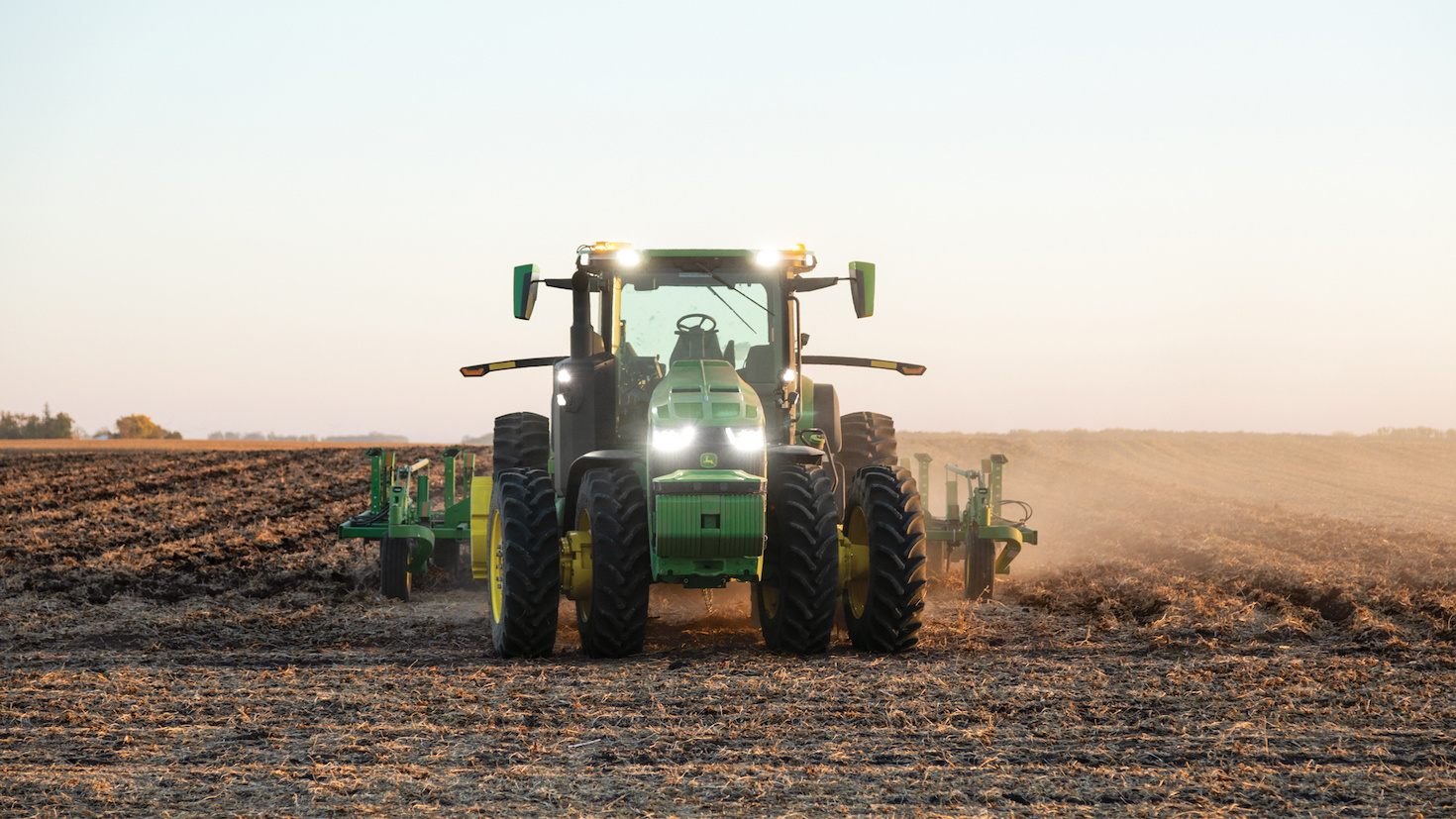Families can expect to pay record high prices at the grocery store for turkey this upcoming holiday...
Modern Farmers are as Good as the Tools They Use

Since the first human plunged a stick into unbroken earth to plant a seed, farmers have relied on tools to increase yield and make their jobs easier. Machines driven by plodding hoofs, and later, piston engines, first furrowed American fields that today feed hundreds of millions of people. The industry’s backbone was forged with iron. And as the global population increases, the tools that enable production are becoming more sophisticated.
“When everything is working, it’s kind of fun. It’s almost addicting. You can hardly tell when I’m planting,” says Matt Knudson, a fifth-generation Kansas farmer.
He was behind the wheel of his tractor on a recent spring afternoon “planting green” into a 5-foot-tall rye cover crop. The cover crop had gotten out of hand due to persistent wet weather. Without the ability to visibly see the rows, Knudson relies completely on the machine’s precision guidance system to plant soybeans.
It would be a difficult job to do using mechanical row markers.
Mind-boggling processes
The digital processes that allow Knudson to plant with straight-line precision in such conditions are mind-boggling. As he maneuvers through the sea of rye across hilly terrain, each of the 16 individual row drives automatically turns on and off, dropping seeds in line and uniformly apart. High above, constellations of satellites track his every movement, down to the centimeter. A small screen documents the exact location of each seed.
Abstractly, the system represents a technological triumph of human innovation — a miracle of the modern era. But for Knudson, it’s just another day at the office. His modesty downplays the complexity beneath his machine’s steel skin: “A farmer is only as good as his tools. Technology is a tool,” he says.
Changing expectations
As the agricultural workforce shrinks and the global population balloons, machines with such advanced technology are being asked to shoulder more of the burden every year. Farmers are evolving, too. It’s a trend that’s been happening for some time now, and one that everyone (not just farmers) is preparing for.
Adam Meyers, regional operations manager at Kansas-based Baldwin City Heritage Tractor, says dealer networks are broadly positioning themselves to manage automated farm machine fleets in the future. Technicians’ skill sets, for example, are evolving to meet emerging and future demands.
“We can teach someone how to turn a wrench,” Meyers says.
More than motorheads, repair techs of modern farm machinery must equally know their way around a computer and a combine.
When a machine breaks down these days, “most of the time, it’s electrical. It’s technology,” he adds.
A double-edged sword
As machines and the ecosystems that keep them running are evolving to become more digital, farmers’ reliance on agricultural tools is the same as it’s always been. It’s a double-edged sword.
This spring’s solar weather brought many operations to a rumbling halt because guidance systems were leading machines astray. Jokes about breaking out yesteryear’s mechanical row markers abounded, highlighting just how reliant modern growers have become on precision guidance systems. Planting with row markers is a lost skill, and as crops fully emerge this summer, some fields will undoubtedly be marked with squiggles.
But while the event might have made farmers appreciate conventional tools, the aurora lights also illuminated the skill of younger growers like Knudson. Setting a guidance line might not, in and of itself, be difficult. Keeping up with increasingly complex systems is.
Yesteryear’s farmers were as good as their machines — mechanical row markers and all. So are today’s growers — precision guidance and all.
EDITOR’S TAKE:
Just as the article states, machinery and technology have always driven innovation and productivity gains on the farm. What makes farming/ranching so different today is the complex world of digitally driven computers and satellite guidance. Farmers and ranchers must be more tech savvy than ever. Hardware and software must be working perfectly for the machinery to perform. Keeping it in perfect working order is another game-changer. The farm machine is likely communicating with the dealer who sold it to the farmer or rancher. Technicians are able to monitor that piece of equipment from their computer at the dealership. If a problem arises, they jump in the mobile unit and head directly to the farm/ranch. The farmer/rancher may or may not even be aware yet that they have a problem. It is truly amazing how data drive the process and works through computers and satellites. Yet, when all is said and done, it’s still the farmer/rancher with their machines who get the job done. Be sure your dealership is aligned with this type of demand for parts and service attention for the trucks you sell to those farmers/ranchers in your area. Do you offer mobile service yet?







